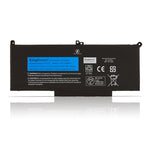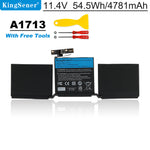You have no items in your shopping cart.
What is the difference between an automated external defibrillator and a defibrillator?

It is vital that AED devices are available in public places and communities. These devices can only work best when everyone has the knowledge and skills to use them. We cannot predict when an emergency will occur, but we can increase our risk resilience by being prepared so that we can act quickly when needed.
The term AED has become a household name, but not all defibrillators are called AEDs. Both automated external defibrillators and defibrillators can respond to serious heart problems, such as ventricular fibrillation or cardiac arrest, where the lower chambers begin to vibrate, by delivering targeted electric shocks to the heart to restore it to a normal heartbeat. So, what is the difference between an automated external defibrillator and a defibrillator?

What is an AED ?
AED, the full name of which is automatic external defibrillator, is a portable medical device that can diagnose specific arrhythmias and deliver electric shock defibrillation. It is a medical device that can be used by non-professionals to rescue patients with cardiac arrest. AED is generally placed in public places with large crowds and dense traffic, such as airports, subway stations, schools, shopping malls, cinemas, stadiums, etc., and can be used immediately.
It can provide voice/animation guidance for cardiopulmonary resuscitation and prompt the user to perform external defibrillation treatment. It is used to treat suspected cardiac arrest patients (adults and pediatric patients) who are unresponsive, have no breathing or abnormal breathing, and have no signs of circulation.

What is a defibrillator?
A defibrillator, also known as an electric cardioverter, is an electronic medical emergency device that uses electric shock to rescue and treat patients with arrhythmias. It is quick, safe, easy for nurses to operate, and effective . This device is designed for professionally trained medical personnel to detect various heart problems and provide corresponding treatment.
It requires doctors to assess how much electric shock energy is needed based on the patient's condition and decide when and how long to apply the shock. This precise operation requires doctors to have rich experience and superb technical level to ensure that patients receive the best treatment results.

Kingsener For M5070A M5066A M5067A M5068A 861304 Replacement Battery 9V 2019-12
What is the difference between an automated external defibrillator and a defibrillator?
1.The operator is different
If you search for information related to "automatic external defibrillator" and "defibrillator monitor" on the website, you can see that the most intuitive difference between the instruments is the operator. Professional-grade defibrillators usually need to be operated and used by trained medical professionals because their use process may involve more complex settings and decisions.
AEDs have a simple and easy-to-use design and voice guidance, allowing non-professionals to operate them in emergency situations, such as attaching electrodes to the patient's chest as instructed and following automated guidance .
2.Design and Usage
Defibrillator is a more general term that can include various types of defibrillation equipment, including professional-grade defibrillators and AEDs. Professional-grade defibrillators are generally used by medical institutions and have more features and options, such as adjustable shock energy and electrocardiogram monitoring. AEDs are portable automated defibrillators designed for non-medical professionals or first responders, and are simple and easy to use.
3.Different people decide whether to recommend electric shock
AED has built-in analysis software that automatically analyzes the patient's heart rhythm and gives a prompt whether an electric shock is needed. In other words, whether to defibrillate the patient is determined by the AED. The use of a defibrillator must be determined and operated by a doctor based on the electrocardiogram indicators, which requires professional medical knowledge. At the same time, some defibrillators also have the function of AED, which can be used by medical staff who lack emergency rescue experience in hospitals.
4.Different places of application
A defibrillator is a professional device used by medical staff, and is generally used in hospitals, rescue sites after professional emergency personnel arrive, etc. AED is widely used in various public places including hospitals, subways, passenger stations, airports, schools, shopping malls, large venues, parks and scenic spots, etc., so that it can be quickly found and used within a few minutes after the patient falls to the ground.

5.Functional differences
Defibrillator monitors (defibrillators) also have more functions than AEDs. The main function of AEDs is defibrillation, and they are classified into fully automatic and semi-automatic types. The difference is that after a semi-automatic AED analyzes the heart rhythm and gives a shock recommendation, you need to click the defibrillation button to complete the release of the shock; while a fully automatic AED completes the heart rhythm analysis, and after detecting a heart rhythm that requires defibrillation, it will automatically release the shock to complete the defibrillation.
Defibrillators have many other functions, such as synchronized cardioversion, pacing, monitoring, and even with some plug-ins, they can measure blood pressure, blood oxygen saturation, end-tidal carbon dioxide, etc. These functions provide medical staff with a lot of vital sign data support and provide defibrillation needs for various situations. Some defibrillator monitors even include AED functions .
6.Different usage process
AED is designed for public use. It is very easy to operate and has voice prompts throughout the process. We do what the AED says. Even just 3 steps are needed to complete defibrillation!
The use of a defibrillator is more professional and complicated. The panel structure includes: monitoring display, energy storage switch, energy storage display, energy release switch, motor board, synchronous switch and asynchronous switch, etc. Among them, there are also multiple pacing function keys, which can determine the pacing rate, mode and current output, as well as disconnect the pacemaker function. Different hospitals even have different procedures.

How to use AED correctly?
When using an AED, emergency personnel must operate it step by step. First, before defibrillation, it is necessary to confirm that the person being rescued has "three no symptoms", namely: unconscious, no pulse, and no breathing. The specific operation steps are:
Step 1: Identify and initiate first aid.
Determine the patient's consciousness. Pat the patient's shoulders with both hands and call the patient in the ear to see if he or she responds; call 120 for help and prepare to use AED; determine the patient's heartbeat. If the patient is not breathing or breathing abnormally, press the patient's carotid artery with 2-3 fingers at the same time. If there is no pulse, it means cardiac arrest and cardiopulmonary resuscitation needs to be started immediately.
Step 2: Perform 30 chest compressions.
Let the patient lie on his back with his head and torso in the same plane. Cross his hands, lean forward, stretch his arms, and press vertically downward. The compression depth is 5-6cm, and the frequency is 100-120 times per minute for 30 times.
Step 3: Give artificial respiration twice.
① Place one hand on the patient's forehead and press down, place the other hand on the patient's lower jaw, lift it up, remove foreign objects in the patient's mouth, pinch the patient's nose, and quickly blow air into his mouth.
② Continue to repeat steps 2 and 3, turn on the AED immediately after it arrives, and follow the instructions until medical staff arrive.
It is important to note that both professional-grade defibrillators and AEDs aim to restore the heart to normal rhythm by delivering an electric shock. In the event of cardiac arrest or severe arrhythmia, timely CPR and defibrillation are critical first aid measures, regardless of the device used. If you encounter such an emergency, call emergency services immediately and seek help from professional medical personnel.
If this article still doesn't help your laptop battery, you can buy a new battery at BatteryMall.com
If you want to learn more about batteries, please visit:BatteryMall.com/blogs/support








